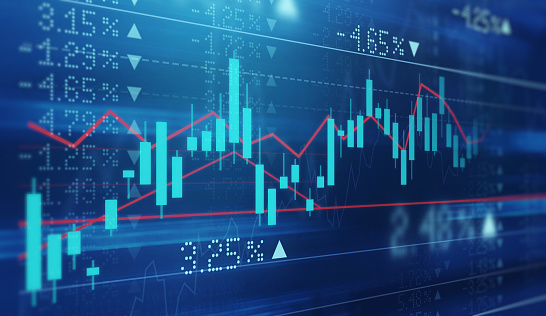Basic Glossary to Avoid Getting Amongst the Data: 2nd Part, from “F” to “Z”

Glossary - 2nd part: from “F” to “Z”
The aim of this post and its first part is to help you understand some of the most common technical terms that frequently appear in the field of data science.
Terms included in the 2nd part: Federated data; GIS (Geographic Information System); insights; interoperability; IoT; KPIs; machine learning; metaverse; NFC; UNE standards; use cases; Query and SQL; sandbox; and token.
FEDERATED DATA: data federation is the process that allows multiple databases to function as a single user and application-facing database. The federated database is supplied with data from the rest of the database and transforms information to present it as if it were its own. This is a virtual process and does not involve copying the content of each database. It is very important for facilitating the display of the data and when transforming it into knowledge.
GIS (GEOGRAPHICAL INFORMATION SYSTEM): this consists of the integration of different variables with geospatial data in the same map or three-dimensional scenario to facilitate the interpretation of their relationships and potentially identify patterns or trends. This is done using different layers of information, combining these layers and using filters. You can find out more about they work in the post “Geospatial data: maps that help to interpret data”.
INSIGHTS: generally speaking, the term means a deeper understanding. Applied to the world of data, it means the intelligence generated by data, which helps to understand what is going on. In a way, the term could be defined as the levers or keys that serve as the basis for actions or decision-making related to data.
Insights are not raw data. Nor is their display on dashboards. Insights require analysis and can often be reflected in a dashboard by combining key indicators (individual data or metrics). The relationship between these indicators gives rise to the insight. For example, if you have data about visits to a monument, information on the average waiting time to gain access, knowledge of the degree of satisfaction with the visit and active listening on social media, by analysing the data, it may be possible to confirm that from a given waiting time onwards, visits stagnate, the degree of satisfaction plummets and negative posts appear on social media. As a result, waiting time and degree of satisfaction would be key indicators and the relationship between these data and their effect would be an insight that will make it possible for us to reach decisions on how to establish a booking system, launch a shock strategy on social media, propose alternative visits or activities based on waiting times or liven up the experience to reduce the tourist's negative impression
INTEROPERABILITY: this is the capacity of different information systems to exchange information and knowledge between them. Generally speaking, this entails systems speaking the same language and is applied from data processing to data management, storage and exchange. When it comes to data processing and management, the homogenisation or standardisation of vocabulary, structures and their characteristics are key. Meanwhile, technology is essential to storage and exchange. It can be limited to the use of commonly used file types (csv is perhaps the most popular). However, for the effective exchange of large amounts of information, it could include the use of connectors from different software through APIs, the development of a common connector that works as a hub or the creation of a data space in which exchanges take place through direct access of all members to information.
IoT or INTERNET OF THINGS: the connection of physical objects to the Internet for the transmission and exchange of data. This usually involves sensors and computer chips equipped with wireless communication technologies such as Bluetooth or NFC (Near-Field Communication). It allows objects to communicate with one another and for information to be transmitted to a server or to the cloud for processing and possible analysis. It is commonly said that this connection to the Internet transforms any object into a smart object, as it can act based on the data it collects and transmits. It is the basis of smart cities. In tourism, it is very practical tool for monitor flows and customising offers or services.
KPIs: or Key Performance Indicators. These are the data that must be monitored in a dashboard and that reflect the performance of whatever aspect is being studied. For example, KPIs could be set for the number of visits to a monument and the degree of tourist satisfaction. The relationship between the number of visits and the degree of satisfaction or the waiting time would be an insight.
MACHINE LEARNING: this is an artificial intelligence function that uses data processing and algorithms to enable computer equipment to learn automatically, similar to how a human learns. In other words, learning improves with practice and study; in the case of computers, it will be more accurate the more data it processes. In general terms, this type of learning requires human intervention for the purposes of supervision and information labelling because, to a large extent, structured and reviewed data is required to facilitate learning
METAVERSE: a virtual and three-dimensional ecosystem aimed at human interaction using an avatar. Unlike digital twins, the metaverse does not reproduce the operation in real time, because it does not process data and is based on the integration of the real and the virtual world in a symbolic way. For example, the idea of a tourist office can be reproduced, even though the actual tourist office is not necessarily replicated. Or the presence of a destination can be limited to its main tourist attractions without reproducing the whole city.
NFC: a short-range wireless communication technology that allows data to be exchanged between nearby devices (approximately 10 centimetres from one another at the most). Its most widespread use is perhaps its application in mobile payment and identity validation.
UNE STANDARDS: these are the technical specifications approved by the Spanish Association for Standardisation and Certification (AENOR) to help companies and agents in different sectors to increase their quality and safety and to position themselves in the market. They are based on experience and technological development with all interested parties participating in their formulation. Although they are voluntary, their follow-up is a good practice for the standardisation required to work with the data.
USE CASES: these are the implementation of practical examples based on business ideas, to detect needs, problems and solutions based on experience. Learning from these use cases leads to the creation of flagship projects that serve as a model for business development. The government is actively involves in the release of use cases in the data industry, for example with the actions carried out by the Data Office and Segittur for the creation of the tourism data space in Spain.
QUERY and SQL: the former is a query to obtain information from a database or information system. The latter is the most widespread programming language for managing databases and downloading their data. The term stands for Structured Query Language. Its use facilitates the automation of a variety of access processes and the processing of information stored in databases. SQL refers to language in a generic way and although each developer normally offers their own version of the software, it almost always works in a very similar way.
SANDBOX: in IT, the term sandbox refers to an isolated test environment in which developments are tested before they are integrated into a system. In Big Data, these isolated environments are used as spaces for collaborative data exploration and are platforms with a great capacity for data management and processing that are used for experimenting with large volumes of data.
TOKEN: the digital representation of a value issued by a private entity using blockchain. The issue defines the value it represents, although it will only be real in the environment for which it was created. In other words, even if it represents an economic value, it will not be legal tender nor does it have the economic value it represents in the real economy. Its developments range from representing the right to provide services (Utility Token), functioning similar to the way in which financial securities function (Security Token) or stock market shares (Equity Token) to being unique and collectible elements (NFT). These are encouraging the investment in tokens that represent works of art or collectible elements and the subsequent development of digital art linked to tokens.
- If you would like to consult the rest of the terms of this basic glossary, check out the first part of the post. It includes the following definitions
Artificial intelligence; API; beacons; big data; blockchain; business intelligence; csv; data anonymization; data dictionary; data governance; data horizontality; data lake; data mining; data model; data space; data sovereignty; deep learning and digital twins

